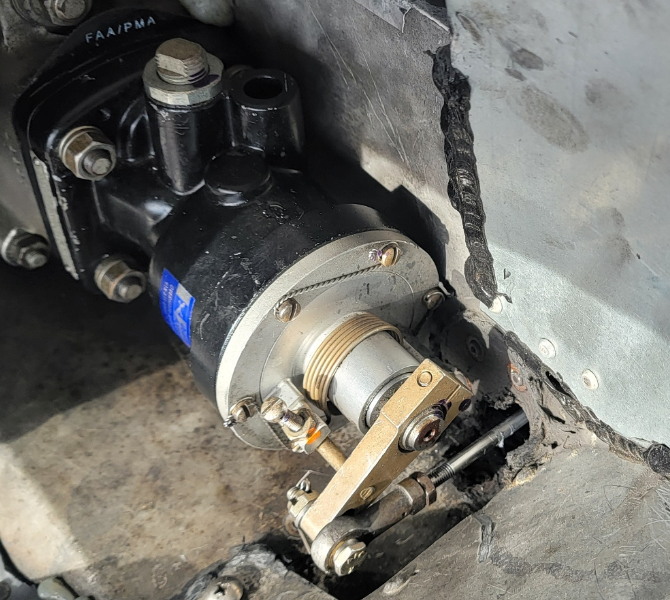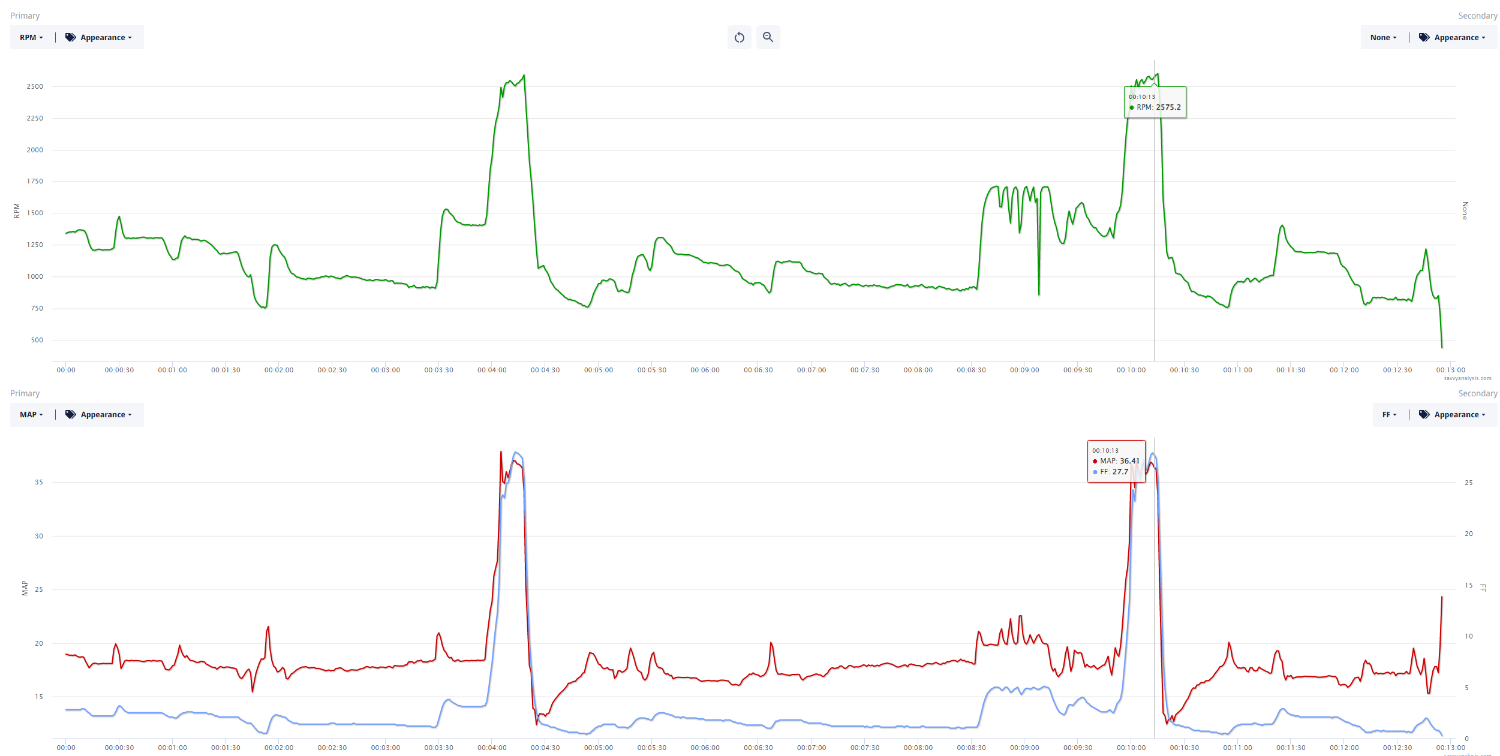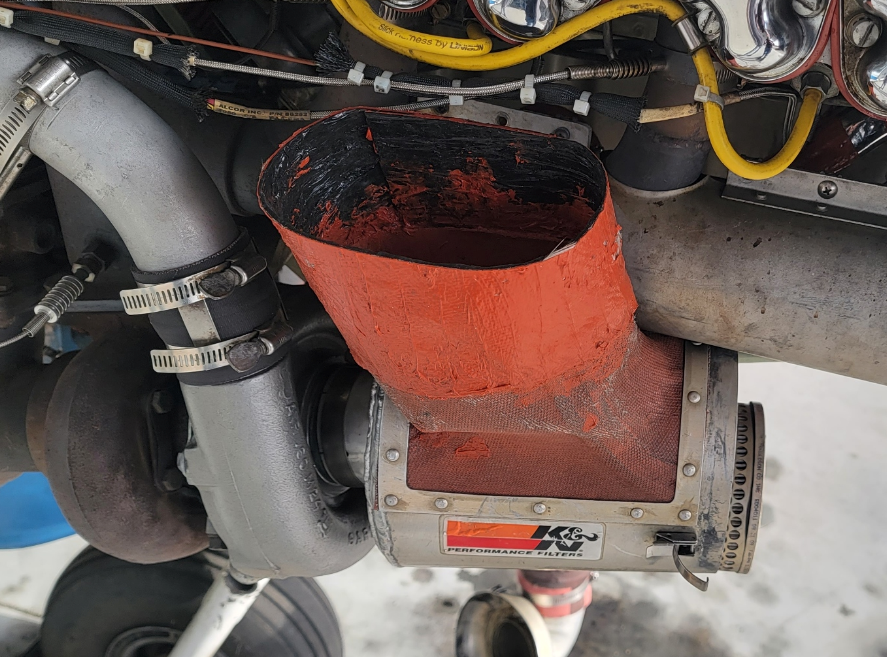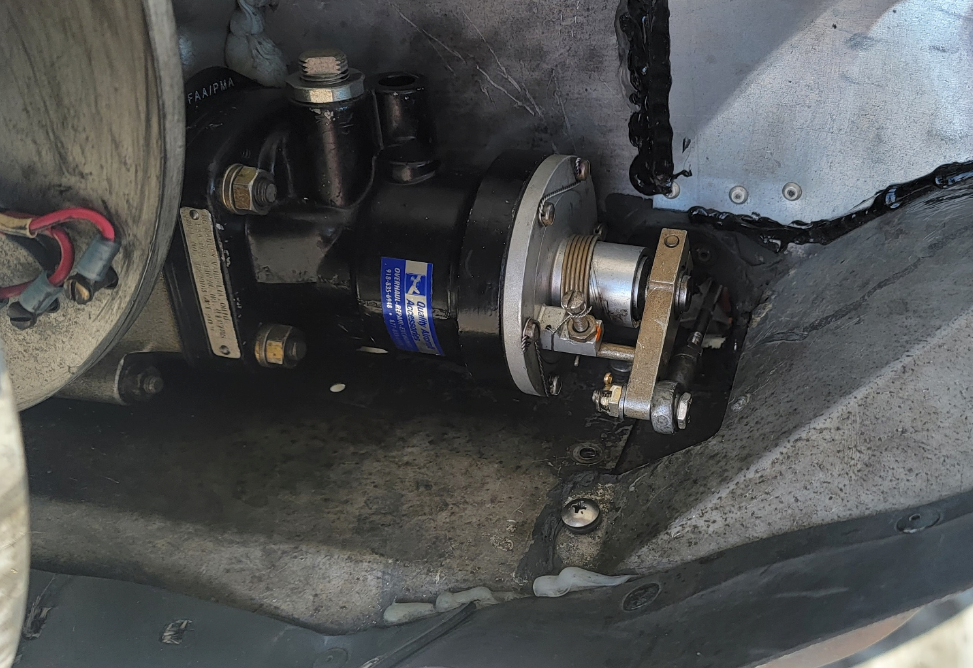-
Posts
772 -
Joined
-
Last visited
-
Days Won
6
Content Type
Profiles
Forums
Blogs
Gallery
Downloads
Events
Store
Everything posted by Z W
-
You could check the air filter inside the housing at the bottom of that boot. A clogged air filter is the designed reason for the alt air to come on. You could also check the alt air door and switch, located on top of the engine on the pilot's side. It's connected by a scat hose to the air filter housing we've been discussing. It's a very simple system - when that boot slips off or is closed off, the engine sucks air through the hose connected to the alt air housing. It pulls open a metal flap and then the engine gets air from the top left inside quarter of the cowling. There's a spring-loaded wire that controls the alt air light in the plane. A magnet and spring hold the alt air door closed under normal operation. You might make sure the alt air door and everything is properly clean and lubricated, if adjusting the boot and checking the filter doesn't solve the problem.
-
Yes, it looks correct. Don't tighten too hard or you can crack the fiberglass naca duct. A shop mysteriously had to repair ours once. Too loose and it can slip off and you'll see that alt air light come on as milotron says. You can also get the alt air light and decreased engine performance if the boot isn't pushed up high enough before tightening, which causes the crease you've spotted to get worse. Just received a new boot this week to install at annual in June. Old one is patched too many times. Mooney makes them in batches and they are not always available, order in advance if you ever do need one. Currently in stock, unless we got the last one. The intake filter housing it's riveted into is thin aluminum that vibrates around and is prone to cracking on the side nearest the turbo. Inspect carefully at annual time.
-
Thanks for posting this. My old whisky compass on the windshield post has started swinging 30 degrees off at most times. I had been wondering how that simple device could fail. A new cushion would be an easy fix to try.
-
I've only seen the low fuel light once. It was near the end of a trip, in the dark, about 10NM off shore over the Gulf of Mexico due to ATC routing. I switched to the other tank which had, supposedly, about 15 gallons left. In theory that, plus the 4 gallons in my low tank, was good for another 2 hours of flight at descent fuel flows with 1 hour remaining in the flight, giving me a 1 hour reserve, to land with about 10 gallons on board. That was planned, as I had 3 adults on board and was stretching for range. I landed short and bought some gas when that low fuel light came on. Didn't care for that feeling and don't plan to see that low fuel light again. I plan my fuel much more conservatively now, and don't really ever see less than 10 gallons on each side. Reliable amounts of usable fuel in both tanks is a redundancy I put a value on. I'm probably extra cautious in part because of the difficulty in being precise with the extended tank setup.
-
The fill port is a Scott part, part number 26875-76. Bought a new one in October 2021 from wbparts.com for $600.52 shipped. Had to wait two weeks for it to ship. I believe the -76 part may have only been used on the M20K. https://www.wbparts.com/commercial-rfq/26875-76.html We didn't have any luck getting ours repaired, our A&P called a couple places but told us he never got a call back. In retrospect, I'd call C&L myself first if I were doing it again.
-
I went through this exercise once. If you fill the mains to the cap, then fill the aux, on our plane anyways, the pressure will start pushing fuel out of the inspection plate on top of the wing nearest the fuselage. Good way to find out where your tanks might be leaky. Keeping track of all 4 tanks with a dipstick requires a lot of patience, waiting after fueling for the fuel to equalize, and a calculator, unless you're better than me at doing math in your head. 90% or more of the time, I fill the mains and go. Leaves you with 75 gallons, plenty of useful load for 1-3 people with bags, and the answer to "How much fuel do I have?" is 6+ hours and more than enough. The sight gauges become pretty accurate under 25 gallons or so. I also have found the tanks will hold more than the placarded 105 gallons if you're patient while filling. But again, it starts leaking out the top of the wings and sloshing out the vents, so not for long. Also, with 105 on board, there's not much useful load left for anything but the pilot, so not a lot of reason to do this on many flights. Good for flying to Alaska without stopping in Canada, heading out to the islands, or setting endurance records, I guess. It is cool to have a plane that's able to use essentially all of its useful load on fuel if you want though. Makes for an amazingly capable machine at 11.5 GPH and 175 knots.
-
I have sort of the same problem. Two boys ages 12 and 7 now pushing the useful load and cubic feet limits of the Mooney. Just booked a trip via United as a result, can't get all 4 of us plus ski gear in the plane. Could ship it ahead via UPS, or just buy a ticket and let the airlines handle all the hassle. Went with option 2 this time. Jumping backwards into a big older piston twin doesn't have a lot of appeal just to do those one or two trips per year. Jumping upwards into something burning Jet-A sounds great, but the costs are huge, especially for the small amount I get to fly. Work and life are very busy right now and we just aren't traveling much, even with a plane sitting there available. Time is the issue more than money, oddly enough. Oldest can't miss robotics tournaments, happening every weekend all fall and winter, which has had a big impact. Last year I was getting pretty serious about just adding a piston twin to the fleet for a few years while keeping the Mooney. Still might, and maybe that's an option for you. Plan would be to sell it after the oldest leaves the house, and still have the Mooney which is the perfect 2-3 person traveling machine. Or keep the twin, I guess, if it ends up being preferred. Requires another (or a larger) hangar. Should still be significantly less money than anything burning Jet-A. Main thing holding me back is actually the idea of how I would find the time to fly two planes and stay current in them.
-
Congrats. Just went through a similar situation related to the fuel system and engine setup procedures. They are complicated and it seems many A&Ps are not familiar and do not have the gauges to do it. Also, it requires cowling and de-cowling the aircraft to make each adjustment, a very tedious process. Once it's done and your TSIO-360-MB engine is dialed in, though, it sure is an amazing piece of machinery and engineering.
-
Probably. In many states the minimum required liability insurance limits are $25,000.00, an amount set 40+ years ago. That no longer covers the cost of an ambulance ride to the emergency room to get X-rays and confirm nothing is broken. Most policies sold are for the minimum amount (people call and ask for the cheapest monthly payment they can get). So the odds are, if someone hits you, they will have $25,000.00 of coverage available. To protect yourself, you can buy underinsured coverage on your policy, that pays you in that scenario. If you don't know how much your liability limits are, there's some chance they're only $25,000.00, and if you cause a crash, you're liable for any amounts over that. Getting a higher limit policy may be a good idea, and even better, an auto umbrella policy with a $1m or $2m limit is usually pretty cheap. The problem for airplanes is that getting an umbrella policy that covers flying is impossible. I've asked and been told nobody sells them. I've also asked about getting $1m smooth coverage on the plane and been told we can't get it (Avemco). Maybe a good broker could source it, I don't know. Insurance companies are good at selling you a product that doesn't help much when you need it. They make a lot more money that way.
-
I've wondered... are Acclaim owners just more likely to just say, "Top the engine"? That would explain why many of them listed for sale show a recent top overhaul, which many owners here then believe is a sign of a problem with the engine or its operation. Maybe it's not. Thinking being, the Acclaim owners represent those who paid the most for their Mooneys, and are likely the least concerned with costs of repair and maintenance. Bad compression reading at annual? Put all new cylinders on it. I want it ready to go and not down for more cylinders again at next annual. Only slightly more time down for a top overhaul than to do the one failed cylinder. We've put several new cylinders on our M20K over the years. Always due to low compressions at annual, and at the mechanic's recommendation, never due to abnormal temperatures or engine performance. I just read SB03-3 for the first time, and now feel misled. Never once were we asked to go fly it for 45 minutes so they could re-check the cylinder, or shown borescope photos of a problem inside the cylinder. I suspect many Acclaim owners, and other plane owners, have been treated the same.
-
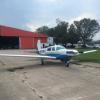
Rocker Switch Cover Replacements - 3D Print your own
Z W replied to freff's topic in Modern Mooney Discussion
PLA prints very easily. It doesn't "mess up" as often and you don't have to spend a lot of trial-and-error adjusting temperatures and print speeds to avoid stringing, layer separation, and other problems. So, it's what most people get started with. The things you make out of it are surprisingly durable, in my experience, but it's not UV-stable. And supposedly it will melt in temperatures experienced inside a car or airplane on a hot day, though I've not tested that myself. I've printed some things in PET-G. Took quite a while to figure out the settings for my printer to put it out reliably, but after that, it worked pretty well. Supposed to be UV-stable. I have some things that have been outdoors in the elements for going on two years that are holding up fine. Much higher melting point, so unwanted melting not an issue. Not as toxic to print, and doesn't really require a heated enclosure. I've printed just a couple of things in ABS. I do have an enclosure. Even with that, I found it very difficult to print reliably. Probably user error. -

Help Diagnose Engine Problem - M20K TSIO-360-MB
Z W replied to Z W's topic in Modern Mooney Discussion
Plane is fixed. Thanks so much to everyone here who chimed in. I don't think we'd have figured it out without Mooneyspace. Cheers. -
Never seen that before. I would suspect something binding / shorting out in the gear motor, since that's the system you were turning on when the problem started.
-

Help Diagnose Engine Problem - M20K TSIO-360-MB
Z W replied to Z W's topic in Modern Mooney Discussion
That makes sense, about the governor maybe not being the problem. Bringing in another mechanic is not really an option, that I'm aware of, we'll have to take the plane to them. I'm getting more comfortable with that option as we rule out causes. With the air intake issue resolved, it's running strong and reliably again, for the first time since it went in for annual in May. A lot of my concerns were caused by it running differently (and sometimes roughly) every time we fired it up. The shop ordered differential pressure gauges to set the fuel flows, and we had to wait a couple weeks for that, so I believe it was done per the engine setup instructions. I'm now wondering if it was done with the air intake blocked off and the engine running on alt air, though. I think it almost had to be. Maybe re-performing the engine setup with an unrestricted air intake would be warranted. Thanks to everyone for your thoughts. Your help means a lot. -

Help Diagnose Engine Problem - M20K TSIO-360-MB
Z W replied to Z W's topic in Modern Mooney Discussion
Hah, good point. To be fair to them, we knew they repaired the airbox due to metal fatigue cracks. We've been waiting for the Mooney factory to make us a new one since May. They declined to release the shop drawings to let us have it made. So it was re-welded by a local welding shop. I just did not know they'd also added the rubber to the intake boot. It's a McCauley prop. I'll put checking the blade angles on the list of possibilities. Thanks for your help. -

Help Diagnose Engine Problem - M20K TSIO-360-MB
Z W replied to Z W's topic in Modern Mooney Discussion
Depends on what you mean by the "stop in the governor". The control arm swings up and stops against the RPM adjusting screw. Better picture here: We wondered if there's some internal stop inside the governor, because the arm rotating does not seem to bottom out. It's stopped by the screw, which is now all the way out. However, this is how the governor came back from the repair station, approved as in limits and supposedly making 2700 RPM on their test bed. So it doesn't seem likely that it's incorrectly set. The arm swings smoothly and firmly to the stop, with 1/8" of travel still left. Firmly pressing in the prop cable does not give any more RPM. I do still suspect the governor. I don't understand how giving it more travel did not increase the RPMs at all. -

Help Diagnose Engine Problem - M20K TSIO-360-MB
Z W replied to Z W's topic in Modern Mooney Discussion
What seems odd about the EGTs? Some of those runups look strange I believe because when they were done with the cowl off, the air intake boot collapses, blocking off the air intake completely and the engine starts running off alt air. It won't idle correctly like that, by the way, and will only make 33-34" of MAP. It was doing the same thing with the cowl on, intermittently, depending on how good of a job you did cramming the extra intake boot material up onto the inlet on the lower cowl during install. I was the first person to realize this yesterday after several months of attempted troubleshooting when I noticed the alt air light was on during runup. Verified it by having someone watch from outside the plane. The engine will absolutely suck that boot flat against the air filter and choke itself onto alt air. Also in the latest data we were cycling the prop a lot, both at low and high power settings, trying to see if flushing some oil through the prop / governor would make any difference. It did not. Lots of high and low power prop pulls. May make for odd engine data graphs. -

Help Diagnose Engine Problem - M20K TSIO-360-MB
Z W replied to Z W's topic in Modern Mooney Discussion
Not to my knowledge. How would those get changed? The prop has not be reinstalled. -

Help Diagnose Engine Problem - M20K TSIO-360-MB
Z W replied to Z W's topic in Modern Mooney Discussion
Spent all day working on this today. Finally solved the original low manifold pressure problem. During last annual, they repaired/rebuilt the air filter intake housing. New/replacement not available. Someone repaired the cloth boot by adding about 3" of rubber extension: When the lower cowl was installed, this extended boot bunched and shoved down into the air filter housing, completely blocking off the intake, causing the alt air to come on. Trimming this rubber boot down to remove the excess material fixed the intake problem. After that, the engine was making full MAP (38", then settling to 35.5" which is perfect) and running great. Turns out we probably did not need to spend months replacing the fuel pump and getting it calibrated. But at least now we have a new fuel pump. Still have a problem though. RPM will not go above 2520 or so during static runup, or 2600 at 60 knots during high speed taxi: Fuel flows are 24-26 GPH which is good, maybe a little high even. MAP is 36" or even a little more, which is great. RPM just won't go any higher. Prop governor was previously sent out for IRAN, came back from the repair shop as in-spec. Today the governor limit screw was adjusted all the way out, and the brand new prop cable was properly adjusted and reset for maximum travel. Resulted in no change to engine performance. Photo proof: Still no more than 2500ish static RPM, and 2600 down the runway with takeoff power. This is displayed on the G500Txi that is 2 years old. The analog factory RPM gauge shows about 100 RPM lower at any given time, e.g. it was reading 2400 during runups and 2500 down the runway. That's normal for it to read lower than the Garmin. The engine runs, sounds, and feels great, as normal, now that the air intake problem is fixed. Plane seems to have the usual amount of power. Everything seems fine except for the RPM readout. Any suggestions? Running out of ideas. The service manual's "Propeller Governor Trouble Shooting" section's remaining suggestions are "Low engine power - Consult engine manual" and "Sticky pilot valve - Remove head and clean pilot valve..." which would appear to be a part inside the prop governor. Another data point - discovered the shop changed the oil with 100W, instead of the 15w50 we've been running for years. Asked them to change it which they say they did. No idea if that would explain some of the trouble. We plan to change it again ourselves here shortly. Filters arrived this afternoon. If anyone wants to review the full Savvy logs for more info, they are here: https://apps.savvyaviation.com/public_account/da323253-5fc0-4292-8b9c-75ae9ddd8305 Had a great day working on the plane and learned a lot about it. Thanks in advance for any suggestions anyone can give that we can either do or provide to a shop. -
New post yesterday from Garmin on Beechtalk: Hi everyone, I hope your holidays are going well. We're here and the team is making progress on the resolution. We received FAA Type Inspection Authorization (TIA) on the aircraft this morning that allows us to proceed to flight testing, which also occurred later this afternoon. We'll be analyzing the data over the next couple of business days. Once our team has all of the data together, they can sign the Supplemental Type Certificate (STC) authorizing the software that resolves this issue. Once STC is received, we'll publish a Service Bulletin with the instructions for the update. Expect our next update to confirm the availability of the Service Bulletin either the first or second week of January. I appreciate your patience, more soon. The Garmin team wishes you and yours a Happy New Year. -Joey Ferreyra Garmin Sales & Customer Experience Manager
-
Someone from the Garmin support team posted on Beechtalk that the FAA had the software fix data and were going through an expedited process of approval. It's already available for the experimental autopilots. I seem to remember them saying they were hoping to get approval before the end of the year. Although that's coming up in just a couple days at this point.
-
I got pretty far into a hangar design last year. First question I have not seen you answer - Steel or wood construction? For a 60x60 hangar you can do either, but most contractors will either do one or the other. Depending on materials prices and the size of the building, it can actually be cheaper to do steel. The wood frame option will likely be what they now call "post framed" construction which is using posts made of 3 laminated 2x6's. Then you have engineered trusses across the top. Again, either wood or steel. It honestly may be more of a preference than a monetary or design decision, as both can be done in a code-compliant manner. Do you want a red iron look, or a wood framed look? Wood can be easier to insulate with the traditional pink rolls. Speaking of hangar size - Scale out a drawing of your 60x60, and then of a Mooney, plus whatever other guest planes you envision you might one day host, RV's you may want to park inside, trucks, cars, etc. Print them out on scaled paper, or do it in CAD. You can then spend as many hours as you want moving hypothetical objects in and out and around in the hangar. Draw in the lines for your living space in the back, posts, etc. where you can't park stuff. It will help you understand how large the door needs to be for what you want. Remember that 4' of clearance on a door is only 2' on each side, which doesn't feel like much when you're pushing on the nose of a plane trying not to clip the wings. In reality, hangars are designed structurally around the door. Each has different requirements and I'm told it all affects the wind load. Choose your door size before sending the plans off for bids on the building package. Bi-fold doors hang from the building and require a very heavy (expensive) steel header to support their weight, with lots of cross-bracing to take the side load of the door. Hydraulic doors instead put the weight down the posts at the side where the hydraulic arms attach, putting far less stress on the building, but at the requirement of some concrete piers in the foundation. The hydraulic is less overall cost for this reason, but again, you need to choose the door before you spec and price the building and the concrete. Looks like you've already started this, but I found bi-fold quotes came in "cheaper" because the door company was not supplying the header. Once you added in the additional building material cost it was not any less money. They also require the building to be taller for the same door clear span, which adds a lot of material costs. Just raising the overall height by 2' can be tens of thousands of dollars. Even if you don't plan to heat the hangar, you still should consider pouring the slab on insulating foam and putting pex pipes in it for future heating. Impossible to do once it's poured. Many are heated with residential water heaters that are very inexpensive to run and maintain. Some codes may prohibit this. Leave room in the floor plan for a boiler room where the pipes come up. Don't forget floor drains in the hangar, and maybe a power, water, and/or compressed air box or two set in the concrete in the middle of the building. It will take a 30' cord or hose just to reach the middle of the floor from any wall. 60' if you're trying to reach something parked against the other wall.
-
Looks very similar to the one on our 262 conversion, which is a "600150-001-VF Air filter can back plate", made for Mooney by Globe Engineering at one point, but no longer. It appears to be a common failure point there where it attaches to the hot turbo. Ours has been repaired and re-welded multiple times. Last time we did it, during annual in May of this year, we sent an email to the Mooney factory asking them to either 1) make us one, or 2) release the shop drawings and material call out for the part number so that we could have an owner-produced part made that would be more durable and last longer. They replied that their engineering / production staff were looking into production of a replacement unit from the factory. Never heard back again. Hope you have better luck. If you want to PM me, I can share the contact info for the Mooney employees we were in contact with.
-

Help Diagnose Engine Problem - M20K TSIO-360-MB
Z W replied to Z W's topic in Modern Mooney Discussion
I would have no problem doing a regular takeoff limited to 2600 RPM, solo and light and with plenty of runway. The plane was flying just fine at 60 KIAS doing my high speed taxis and was up to that speed before using 1/3 of the 5000 foot runway. There's plenty of power. My concern comes from not knowing why it's suddenly only making 2600 RPM. A replacement cable and lack of adjustment of the governor screw stop is starting to sound likely. If that's it, I would have no concerns flying the plane, but would rather just get the screw set properly. -

Help Diagnose Engine Problem - M20K TSIO-360-MB
Z W replied to Z W's topic in Modern Mooney Discussion
I'll grab the engine log SD card out of the plane hopefully today and post some logs of fuel flow, fuel PSI, MP, and RPM. I was expecting to leave the plane in the shop for them to continue troubleshooting, so I did not remove the log card. Instead they basically threw their hands up and said they can't continue to diagnose until someone flies the plane to confirm there's a problem, since they believe it is fixed and will make 2700 RPM in the air. Last night I sent the factory service manual instructions for adjusting the RPM to the shop manager and asked for confirmation that process was followed. Got this in response: "I can confirm that we followed the service manual as listed in your previous email. The prop governor was bench tested by Aircraft Accessories of Oklahoma. Their technician said it was running at 2800 rpm which we had adjusted it too before removing it. When I contacted them about the bench test, they requested we leave the adjustments where we have them for the bench test. Once they perform the test they would let us know the findings. At that point they contacted me with information that it was adjusted to 2800 rpm. They stated it was operating properly. They adjusted it down to the 2700 rpm where it was supposed to be. The adjustment screw was safetied when we received it. No adjustments from the 2700 rpm were made." To me, leaving the governor stop screw set and safety wired at a pre-determined setting sounds inconsistent with the service manual instructions for prop governor rigging, which says the screw should be adjusted until the plane makes the proper RPM. Am I misunderstanding that?






